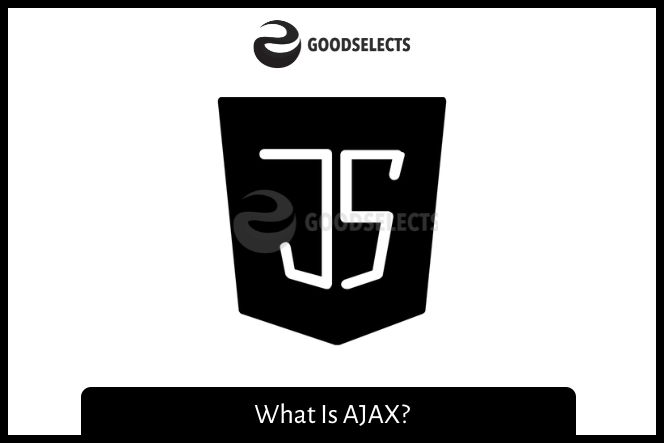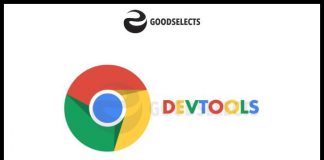Ajax first made waves in 2005 with the Google Search feature. It allows users to type in a search query in the client side of a web page, and the server returns a list of possible suggestions. AJAX is browser and platform-independent and is a popular method of client-server communication. In addition to JavaScript and XML, the standard also supports PHP, a popular server-side scripting language.
JavaScript
The term “Ajax” describes a set of web development techniques that uses various web technologies on the client side to create asynchronous web applications. These asynchronous applications can send and retrieve data without interfering with the existing web page. For example, you could use Ajax to send a list of items to a customer, while the page remains unchanged. This technique is also known as the “Flash of the future”.
Ajax is often used to retrieve small amounts of data from a server and then publish it on the page without having to reload the page. It is also used to modify the value of drop down list boxes depending on inputs. For example, if a visitor enters a college or state, Ajax can change the values. Ajax is a good choice for these types of applications. This technique is also effective when a user is unsure of what to enter.
Ajax is very versatile. It can be implemented in a variety of programming languages. You may have to learn a particular framework’s asynchronous API calls in order to implement Ajax. However, the flexibility of AJAX means that any programming language can be used. AJAX is JavaScript and is still very relevant for many web applications. This technology has revolutionized the way in which a web page communicates with its server.
XML
Ajax is a web application framework for interactive communication with XML files. The code snippet below demonstrates how to fetch information from an XML file. In this example, a drop-down box named “cds” is displayed. A div below the form containing the retrieved information is called “txtHint”. A call to the “showCD” function executes when the user selects data. This event is triggered by the “onchange” event.
Ajax is capable of parsing XML from a string, DOM Document object, or local directory. It can even parse the XML using standard DOM properties and methods. To access the actual contents of an element, you need to drill down to its firstChild or nodeValue. The example below shows how to use DOM Document objects to parse XML.
When implementing Ajax in your web pages, you need to consider the asynchronous and synchronous modes of communication. Asynchronous methods use an HTTP server to transmit and receive information. Ajax sends a request after a user clicks a button, then updates the page with the response after the request is made. XML is the standard format for receiving information from a server, which is why most web browsers are dependent on it. Ajax, on the other hand, is a separate technology and is not dependent on any particular web server software.
In a nutshell, Ajax is an extension of HTML. It is an extension of HTML and uses JavaScript technology to change the display of the content. Ajax also uses an XHR object to exchange data with the server. This object contains a string that indicates that the data is available and can be displayed. For a website to use Ajax, it must be enabled in the user’s browser, which is usually achieved by using the “noscript” tag.
JSON
AJAX is a blend of procedures and innovation that updates parts of a web page. JSON, which stands for JavaScript Object Notation, is an open standard for human-readable information exchange. It is also an easy way to parse and use raw data in AJAX applications. Here are some of the key differences between AJAX and JSON. When used correctly, AJAX can improve the efficiency of web pages.
JSON is a data-transfer language that uses an ordered list of values to represent the data. The data can be strings enclosed in quotation marks, arrays, objects, or boolean values (true/false). It is extremely simple to write and read, and has many advantages. It is compatible with many browsers and operating systems, making it a popular choice for cross-platform applications. JSON is most useful for developers when it comes to server-side parsing. A fast response time is a major benefit of this format.
JSON is most commonly used for reading data from a web server. However, it can also be used to display data on a web page. Using XMLHttp, a common HTTP protocol, JSON can be used to display data. An array literal is declared and gives each object a display name and url. A JavaScript function then displays the objects within the array. When this code is used for reading, it is known as a JSON Object.
XMLHttpRequest
XMLHttpRequest (pronounced “x-met-low-request”) is a JavaScript class that is used to send and receive asynchronous requests between a web page and a server. The object is not limited to XML documents and can fetch data of all kinds. In this article, we’ll look at its use in AJAX.
AJAX is a programming technique that uses an XMLHttpRequest object to communicate with a web server. This object allows your browser to send and receive data from a web server, which updates different parts of a web page. XMLHttpRequest is built into all modern browsers. By using this technology, you can easily create interactive applications that are more dynamic than traditional sites.
To use XMLHttpRequest, call the $.ajax() function. The resulting XMLHttpRequest object is a jQuery XMLHttpRequest. The $.ajax() function returns an XMLHttpRequest object. XMLHttpRequest is required because of the content-types and data-types in the DOM.
The XMLHttpRequest object has three important properties. The first one, onreadystatechange, is a callback function. If the url of the webpage changes, the onreadystatechange event will be triggered. The next two properties, onreadyState and response, set the state of the XMLHttpRequest object. Once the XMLHttpRequest object is ready, the processing of the script will continue.
DOM
AJAX is a development technique that allows you to insert new data into an HTML page without reloading it. Instead of using a special transport mechanism or request format, AJAX works by setting the header in an HTTP request and executing it on the server. The key is the DOM (Document Object Model), which makes AJAX possible. The DOM makes HTML and XML documents understand JavaScript.
The DOM APIs in JavaScript technology are used to create and alter elements programmatically. The DOM APIs in JavaScript technology differ from browser to browser, so understanding them is necessary if you’re planning to use this technology in your HTML page. This enables you to write new Ajax features, and jMaki offers an option for better Ajax functionality. This article focuses on the JavaScript technology APIs, which you can use to create new Ajax functionality.
The JavaScript syntax is explained step-by-step by experienced JavaScript developers. Then, he introduces the concepts of DOM scripting and good coding practices. By the end of the chapter, you’ll be able to create three fully functioning projects. In addition, you’ll learn how to dynamically manipulate markup and page styling, validate forms, and deal with images. The book includes several examples illustrating Ajax development and uses advanced JavaScript techniques.
Google Maps
There are two ways to use Ajax in Google Maps. The first method involves loading the Maps JavaScript API via the script tag inline within HTML, while the second method uses a separate JavaScript file. Both methods have their benefits and disadvantages. If you choose to use the former, you need to know how to properly format the script and use the callback parameter. This article will go over the key differences between these two methods.
One of the biggest benefits of Google Maps over other mapping web applications is the lack of Ajax. This is because it does not require the main page to be refreshed to view map data. It also uses Location Sharing to allow you to view nearby places without reloading the main page. Using these features makes it far easier to use the mapping web application. If you’re interested in learning more about the Google Maps API, this book will be a great resource.
Ajax in Google Maps combines Ajax functionality with Web services to make it a more versatile and effective tool for web map applications. Ajax technology has many advantages for web applications, including speed, security, and scalability. Ajax enables faster implementation and reduces the number of call-backs to the server. It has also become a standard for collaboration, as well as a platform for social media and collaboration.






































